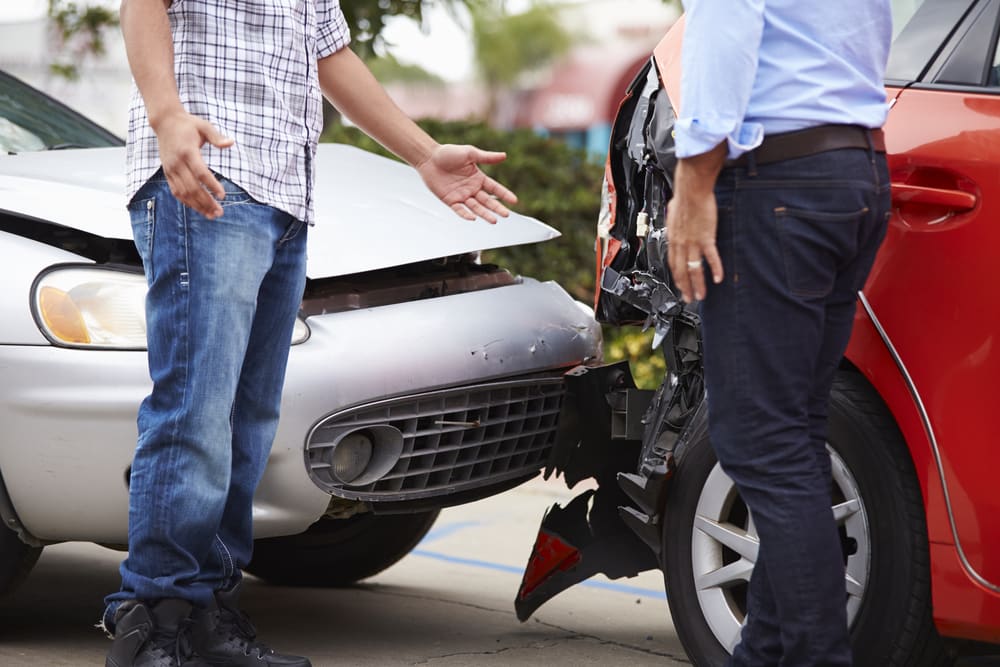Out-of-state accidents refer to accidents that occur in a state where neither or only one of the parties reside. In these cases, the victim has legal rights regardless of the at-fault driver’s residence. In the same vein, at-fault drivers maintain certain rights and defenses. Understanding how courts and insurance companies assess fault after an out-of-state car accident is crucial to asserting a defense against these claims.
If you have been involved in an out-of-state car accident, it is critical that you contact an attorney as soon as possible.

What State Laws Apply in Out-of-State Accidents?
Generally, car accident victims can file a claim in either of the following:
- The state where the at-fault party resides, or
- The state where the accident occurred.
But identifying the appropriate state to file an out-of-state car accident lawsuit is only half the battle. You also need to determine which state’s laws apply. Typically, there is a presumption that the laws of the state where the accident occurred govern the case. Thus, the rules governing your case may differ from the laws in the state where the lawsuit ultimately takes place.
When Am I Liable for an Out-of-State Car Accident?
Liability for an out-of-state car accident generally depends on the same factors as liability for an in-state car accident. To prove that one party is liable, the other party generally must demonstrate that they were negligent. Negligence requires proof of four elements:
- The at-fault party had a duty,
- The at-fault party breached that duty,
- The breach caused the accident, and
- The accident caused actual damages to another party.
Nevertheless, determining fault for out-of-state car accidents can depend on the laws of the state where the accident took place. Of particular importance is whether the state is a “fault” or “no-fault” state for car accidents and what system of contributory negligence the state uses.
Car Accident Fault Rules
Determining fault and liability will most likely hinge on the state where the accident occurred. Most states use a “fault” system to determine liability. However, some states use a “no-fault” system or even a hybrid system.
In a “fault” system,
- The person who caused the accident is liable;
- The at-fault party’s insurance company compensates the victim for damages and losses; and
- The victim may also be able to file a lawsuit against the at-fault driver to recoup additional losses.
In “no-fault” states
- Individuals turn to their own insurance companies for compensation first, regardless of who was at fault for the accident; and
- A victim can file a lawsuit against an at-fault party only under specific circumstances.
Each system has its advantages and disadvantages. While the fault system can offer greater compensation through lawsuits, the process can be time-consuming and costly. On the other hand, the no-fault system streamlines the compensation process but might limit the amount a victim can recover. Anyone at risk of being sued in an out-of-state car accident should consult an attorney to identify whether they will be subject to fault or no-fault laws and to determine their best course of action.
Contributory Negligence
Contributory negligence rules determine whether and how a claim will be affected if the accident victim contributed to their own injuries. For example, what happens if one driver was texting while driving but the other driver was speeding and both parties contributed to the accident? Depending on the state, three different rules may apply:
- Pure contributory negligence. In a pure contributory negligence state, you can be barred from recovering any compensation from an at-fault party if you were even 1% at fault for the accident.
- Modified comparative negligence. Modified comparative negligence rules permit you to recover compensation as long as your share of negligence does not exceed a certain threshold—typically either 49% or 50%.
- Pure comparative negligence. In a pure comparative negligence system, you can recover a portion of your damages no matter your degree of fault.
So imagine in the scenario above, the speeding driver was 20% at fault. In a pure contributory negligence state, they would not be able to recover any compensation. Under either of the other two systems, they would recover 80% of their damages. If they were 60% at fault, they could recover 40% of their damages in a pure comparative negligence state but would receive no damages in either of the other two systems.
Are You Wondering, Am I Liable for Out-of-State Car Accidents?
Determining fault for out-of-state car accidents can be tricky, which is why it’s always a good idea to consult with a local attorney who is knowledgeable in the laws of the state where the accident occurred. At the Law Offices of Ali Yousefi, P.C., we are here to help out-of-state motorists understand their rights and pursue the remedies they are legally entitled to. In every case we handle, our goal is to secure the best possible result for you while minimizing the stress that can naturally occur after a serious accident. To learn more and to schedule a free consultation today, give the Law Offices of Ali Yousefi a call. You can also reach us through our secure online contact form.



